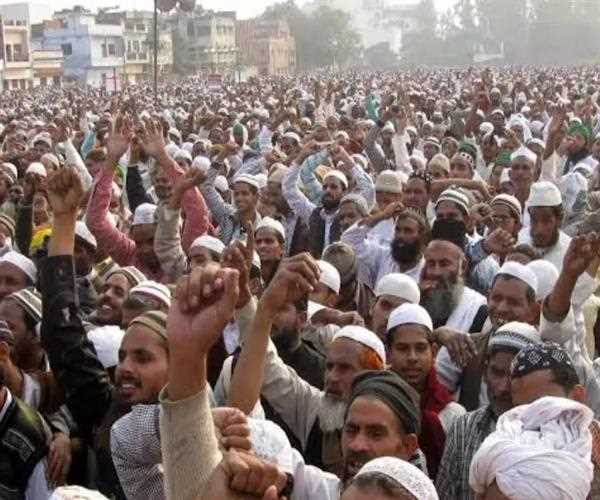Search here

02-Sep-2024 , Updated on 9/2/2024 11:58:13 PM
Changing Demography of West Bengal and Its Impact on India
Introduction
One of the most politically and culturally significant states in India, West Bengal, has been experiencing a change in its population that has generated a lot of discussion and controversy. Some perceive significant effects on the state's identity, political environment, and even national security from changes in demographics brought about by migration patterns, religious demography, and socioeconomic considerations. These developments have an impact that goes beyond West Bengal, which raises questions about what this means for India's geopolitical stability and social unity.
The Demographic Context of West Bengal in History
The heritage of West Bengal is complex, influenced by migration, division, and diversity in culture. The state's lively and broadened character is a result of the melting pot of many nationalities, languages, and faiths. However, there were significant migrations after India was divided in 1947, creating Bangladesh and Pakistan. Many Muslims travelled the other way, with Hindus moving to West Bengal from what was then East Pakistan (now Bangladesh). The current population distribution throughout the state was made possible by this demographic upheaval.
West Bengal has had a substantial inflow of migrants over the years, mostly from Bangladesh, a neighbouring country. Economic causes, religious conflict, and environmental issues like river erosion in Bangladesh have all played a major role in this evacuation. As a result, West Bengal's Muslim population has been steadily growing. This has raised worries about the state's political and social cohesion in certain circles due to the state's shifting religious demography
Current Concerns and Trends in Demography
Studies and statistics from the most recent census show that West Bengal's Muslim population has been growing more quickly than that of other faith groups. The state's total rate of population increase has moderated, although Muslim population growth has continued to surpass Hindu population growth. Muslims make up about 27% of West Bengal's population, according to the 2011 Census, and the percentage has probably gone up during the next ten years.
Some people's concerns and worries have been heightened by this demographic transition, particularly within Hindu nationalist groups. They believe that if the number of Muslims rises, political and social shifts may result, potentially changing the state's cultural character. Additionally, interpersonal disputes are a problem, particularly in locations where the population balance is more fairly distributed.
Political Consequences
West Bengal's changing demographics have important implications for the state and the country. Leftist politics have long been an anchor in West Bengal, where the Communist Party of India (Marxist) has controlled state politics for many years. But in recent times, the political landscape has changed, with Mamata Banerjee's Trinamool Congress (TMC) emerging as the main force.
The political landscape of West Bengal has also changed with the growth of the Bharatiya Janata Party (BJP), especially in the 2019 Lok Sabha elections. Concerns over demographic shifts have been exploited by the BJP, which has used them to further its broader narrative of Hindu nationalism. The party portrays itself as a guardian of Hindu identity and culture against alleged hazards by emphasising the necessity to preserve these things in its discourse.
The BJP's focus on the changing demography has been a polarising issue in West Bengal's politics. While some view it as a legitimate concern, others see it as an attempt to communalize the political discourse and marginalise the Muslim population. The TMC, on the other hand, has accused the BJP of trying to create divisions within the state, emphasising the need for communal harmony and unity.
Effects on Social Cohesion
Social cohesiveness in West Bengal has been greatly affected by the changes in the region's population. Community polarisation is projected to increase as demographic balance changes. Several instances of communal violence and tension have occurred in West Bengal in recent years; these incidents are frequently caused by disputes over political rivals, religious beliefs, and land ownership. Both Muslims and Hindus are feeling more and more insecure as a result of these tragic events.
In districts where the Muslim population is particularly high, there have been reports of increased tensions and conflicts over issues such as religious processions, cattle trade, and land disputes. These areas are often described as "sensitive" or "communal hotbeds" by the media, further exacerbating the sense of division. Critics argue that the rhetoric surrounding demographic change only serves to deepen these divisions, making it harder to achieve social harmony.
Concerns about National Security
Concerns over national security have also been raised by West Bengal's shifting demographics, in addition to the social and political implications. The state's permeable border with Bangladesh has long presented an obstacle for India's security forces. Some claim that the surge of undocumented migrants from Bangladesh concerns national security, making it a divisive topic.
The presence of a large and growing population of undocumented migrants has led to fears about the potential for radicalization and the spread of extremist ideologies. Security agencies have warned about the possibility of extremist groups using the porous border to infiltrate India and carry out attacks. These concerns have been amplified by the rise of global jihadist movements and the presence of groups like the Jamaat-ul-Mujahideen Bangladesh (JMB), which has been linked to terrorist activities in both Bangladesh and India.
The Indian government has responded to these concerns by increasing border security and implementing measures to curb illegal migration. However, the issue remains highly sensitive, with human rights organisations and opposition parties criticising the government's approach. They argue that the focus on national security should not come at the expense of the rights and dignity of migrants, many of whom are fleeing persecution or dire economic circumstances in Bangladesh.
Identity and Assimilation across Cultures
The influence of West Bengal's shifting demographics on the state's cultural identity is a further significant aspect. West Bengal has a long history of being acknowledged for its rich cultural legacy, which encompasses music, art, literature, and a robust intellectual heritage. This cultural mosaic has been enhanced by the flood of migrants from Bangladesh, but it additionally raised concerns about assimilation and the maintenance of the state's distinct cultural character.
Some cultural purists express concerns that the increasing influence of Bangladeshi culture, particularly in border districts, could dilute West Bengal's distinct identity. The Bengali language, for example, is spoken differently in West Bengal and Bangladesh, with variations in dialect, vocabulary, and pronunciation. There is a fear that the growing influence of the Bangladeshi dialect could lead to the erosion of the West Bengali dialect and cultural practices.
On the other hand, others argue that migration and cultural exchange are natural processes that enrich societies. They emphasise the importance of inclusivity and the need to embrace diversity as a strength rather than a threat. For many, the blending of cultures in West Bengal is seen as a positive development that contributes to the state's vibrancy and dynamism.
West Bengal's shifting demographics are a complex, multifaceted problem with broad ramifications for the state's politics, society, and security. Some consider demographic changes troubling, while others perceive them as a normal consequence of migration and cross-cultural interaction. West Bengal is not the only state in India experiencing the effects of these changes as the nation struggles with issues of security, social cohesiveness, and identity.
As West Bengal continues to evolve, it will be crucial for political leaders, civil society, and the broader public to navigate these challenges with sensitivity and a commitment to preserving the state's cultural diversity and social harmony. The debate over the state's changing demography is likely to remain a contentious issue, shaping the future of West Bengal and its place within the Indian Union.

Student
Economics can be broken down into microeconomics, which looks at individual decisions, and macroeconomics, which is concerned with the economy as a whole. Both types of economics utilize historical trends and current conditions to inform business decision-making and make predictions about how markets might behave in the future. Students who choose to study economics not only gain the skills needed to understand complex markets but come away with strong analytical and problem-solving skills.
Join Our Newsletter
Subscribe to our newsletter to receive emails about new views posts, releases and updates.
Copyright 2010 - 2025 MindStick Software Pvt. Ltd. All Rights Reserved Privacy Policy | Terms & Conditions | Cookie Policy